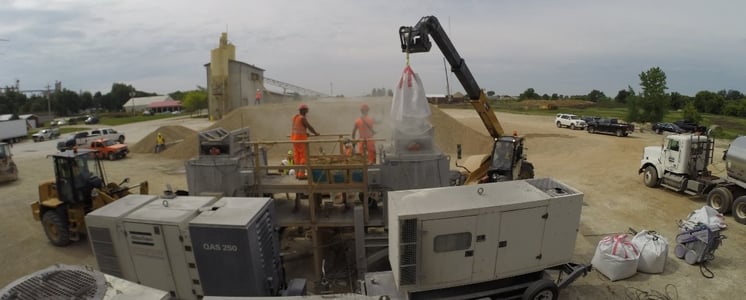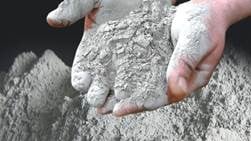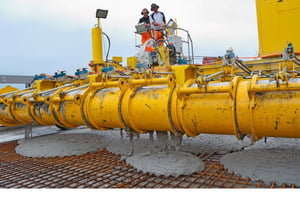While many people use “cement” and “concrete” interchangeably, there are clear distinctions between the two materials. In this article, we break down the difference between these two building materials that are vital to bridge rehabilitation and infrastructure.

Cement: A Foundational Material
“Cement”, commonly referred to as Portland cement, is a powder that is mixed with other materials to create a finished product, known as “concrete”. One of the best analogies to differentiate the two materials is, that “cement is to concrete what flour is to cake.” Essentially, cement is the binding material in concrete and is made from limestone, silica sand, clay, slate, and shells. These raw materials are combined with chemicals (such as calcium, silicon, and iron), crushed, heated at high temperatures, and then ground to create a fine powder – cement.
 Portland cement was first made in the 1800s by a mason in England. The name was inspired by the color of stone from quarries on the island of Portland – off the cost of England. While this was the product of the continuous advancement of concrete technology, cement dates back to as early as the Roman Empire.
Portland cement was first made in the 1800s by a mason in England. The name was inspired by the color of stone from quarries on the island of Portland – off the cost of England. While this was the product of the continuous advancement of concrete technology, cement dates back to as early as the Roman Empire.
Portland cement is the most common type of cement used in the construction industry and is a hydraulic cement hardens through the process of hydration. When combined with water it sets and hardens by a chemical reaction becoming the glue that holds aggregates together in concrete. There are about 13 different types of cement varying in colors, setting times, degree of hydration and performance criteria from Quick Setting Cement to Expansive Cement.
Concrete: A Material in Foundation
As mentioned above, concrete is generally a mixture of cement, coarse aggregates, and fine aggregates sand. Water is added to activate the cement forming a paste that binds the aggregates in the concrete mix together. Other cementitious materials (slag, fly ash or silica fume) and chemical admixtures (superplasticizers) are commonly used to enhance the plastic and hardened properties of concrete. The main difference between cement and concrete is that “cement” is a powder to make concrete and “concrete” is eventually the final product that we use to construct our infrastructure. 
Concrete is a versatile resource as it transforms from a dry mix to a liquid, moldable material – eventually hardening into concrete slabs, walls, and structures. Once hardened, concrete requires specialized equipment such as a hydrodemolition machine to be removed properly. Our team often turns to hydrodemolition as it is a safe, controlled, and non-impact concrete removal solution that has no risks of microcracking of the existing substrate surface compared to other traditional concrete milling and scarification methods.
The first applications of a concrete-like material can be traced back to the Roman Empire and ancient Egypt, though there is some consensus that the modern history of concrete was established around the invention of Portland cement.
Due to the varying strength, durability, constructability and project requirements , concrete technology is continually evolving and improving its overall performance. There are currently over 20 types of concrete, with one of the strongest and most durable being Ultra-High Performance Concrete (UHPC).
UHPC: An Innovative Solution
UHPC has a remarkable compressive strength of up to 29,000 pounds per square inch (psi) as well as direct tensile strength of 1,000-1,800 psi. Beyond its incredible material properties, UHPC is a durable and cost-efficient solution to reduce the cost of rehabilitating structurally-deficient bridges while also expanding their life span.
To learn more about the history of UHPC and how your projects can benefit from its application, read our “Quick Guide to the History of UHPC.”
Interested in learning more about hydrodemolition?



